Krell FPB 700cx Power Amplifier
Original price was: R290,000.00.R105,000.00Current price is: R105,000.00.
I managed to find another Monster Krell,…WOW!
With the Krell FPB 700cx, I can say with certainty that we have an amplifier that should find itself a permanent home in all but the most obsessive, tweaky and ultra-deep pocketed audiophile. I for one could easily retire with an FPB 700cx and never look back. Built with uncompromising attention to detail and backed by a company that is in the game for the long haul, not an insignificant point in these troubled economic times, the FPB 700cx finds itself on a very short list of candidates in the super-amp category. Capable of truly engaging sound, the FPB 700cx always kept my attention pointed were it should be, connected to the excitement and life of the music. While some designs and technologies may focus their attention on perfecting a particular part of the musical spectrum, few can match the FPB 700cx’s ability to blend its overall sonic strengths into what is a singular musical experience.

| The Sound and the Fury |
|
Gregory Petan |
|
4 February 2003 |
 Specifications:
Specifications:
700 Wpc into 8 Ohms
1400 Wpc into 4 Ohms, 2800 Wpc into 2 Ohms
Frequency response: 20 Hz to 20 kHz, +0 db, -3 db
Signal to noise ratio: 120 db
Gain: 26.4 db
THD: 1 kHz <0.03%
Input impedance: 100 ohms
Power consumption:
Standby: 85 W
Idle: 430 W
Max: 6000 W
 Dimensions: 19″ W × 10.3″ H × 25.5″ D
Dimensions: 19″ W × 10.3″ H × 25.5″ D
Price: $14,000
Address:
Krell Industries, Inc
45 Connair Road
Orange, CT 06477-3650
Telephone: 203-799 -9954
Fax: 203-891-2028
Email: [email protected]
Web site: www.krellonline.com
Those floors are reinforced…right?
At the moment, my living room looks like a parking lot occupied by the big and brawny amplifiers of today’s who’s-who in solid-state amplification. In the corner sits the unfailingly musical Jeff Rowland Design Group Model 8TiHC stereo amp. Simmering in the wings one finds the facile yet muscle bound Pass X600 mono blocks, parked squarely between the Talon Khorus X loudspeakers, and the subject of this review, rests the new Krell FPB 700cx 700 Wpc stereo amplifier.
Aside from the cool factor of having all this cutting-edge heavy metal in house, each amplifier mentioned above posses great yet unique strengths that have enabled me to solidify my observations regarding the FPB 700cx. While it’s a ton of schlepping from one 150+ pound amp to the next, it was well worth the exercise in order to get a firm grasp on the sound of the FPB 700cx and how its performance compares to the established benchmarks.
Anatomy of the Beast
If you have never seen the FPB 700cx in person, you are in for a shock. This thing is HUGE! While the Pass X600 mono blocks collectively take up more square footage, the 180 pound, single chassis stereo FPB 700cx is the dominating presence in the room. This is not to say there is anything objectionable about the design of the FPB 700cx – far from it, in fact! Everything about the amp screams quality, if from a more masculine perspective than, say, the gleaming and polished Rowland 8TiHC.
The rear of the amp sports two pair of reviewer friendly, extra large wing nut clad binding posts. Man, I love those things. Inputs include 1 pair of balanced inputs, 1 pair of single ended inputs and Krell’s proprietary CAST II inputs. The CAST technology allows for the signal to be transmitted in the current rather than voltage domain. This is said to produce a wider bandwidth signal and allows for super long runs of cable with no cable-induced distortions. I can’t comment one way or the other regarding the benefits of the CAST II option since I don’t have a Krell front end equipped with the CAST II out-puts. The FPB 700cx also employs Krell’s Sustained Plateau Biasing III, the third generation of the biasing technology introduced nearly a decade ago. The CAST circuit efficiency is said to address the issues of excessive energy consumption and heat generated by traditional class-A biased designs. While the FPB 700cx did get hot when pushed, it remained relatively cool when idle. More information on the CAST system and the plateau biasing technology is available at the Krell website.
As with all the later FPB series amplifiers, the power cord is captive, prohibiting any after market power cord experimentation. While Krell may well have its reasons for this, I for one would have loved to harness the FPB 700cx to the new Shunyata Anaconda power cord that has proved itself so extraordinary with my other electronics.
Is the Past Really Past?
I reviewed the last generation FPB 600c a couple of years ago and found it to be very strong in all areas save the upper octave extension, a slight lack of midrange accuracy and soundstage transparency. Collectively, the shortcomings added up to a darkened over-all character as opposed to the sunnier high frequency perspective offered by the Pass X600 or the accurate mid-band portrayal of the Rowland 8TiHC.
While I don’t know if the FPB 700cx I received had been burned in at the factory, I can say that it sounded very good right out of the box. With an inviting over-all signature, dynamically alive from top to bottom and that bottom octave control that is truly unique to Krell amplifiers, the FPB 700cx made a great if familiar first impression.
Through the first few days of listening, my experiences with the FPB 600c came flooding back. Rock solid imaging, a huge soundstage and yes, the bass. Yet the following days revealed attributes that have never in my experience been put forth by a Krell amplifier to this degree. There was air there! There was a degree of transparency that reached deeper into the soundscape than any Krell amplifier I have heard before. Have these attributes re-defined the Krell sound? In answering that question, I cannot rule out the fact that my speakers have been up-graded which could be contributing to the heightened sense of improvement. On its own merits however, the new Krell 700cx does put on a hell of a show, taking the FPB 700cx much further down the musical road than I had expected.
When talking Krell, you really have to start with the bass. Man-o-man, there is nothing like the nether regions offered up by 700 Watts of Krell power. One of my favorite reference bass busters, “I’m Home Africa,” from Stanley Clarks’ East River Drive (Epic EK47489), builds up a rhythmic propulsion that is pushed along by supremely clean leading edge transients coupled with an explosive dynamic range. The bass on this track should be huge in impact yet tightly focused in space. With the FPB 700cx in charge, that is exactly what I got. While the Pass X600s are no slouch in this area, the FPB 700cx added a level of impact and a sense of limitless dynamic control that contributes a great deal of drama and excitement to the presentation. Want something truly scary? Listen to track 1, “Devils Slide,” from Joe Satriani’s Engines of Creation (Epic EK67860). The shuddering machine gun staccato of low bass notes took on an iron-fisted control and surprisingly, a more accurate rendition of tonal color than the FPB 700cx’s predecessor the FPB 600c. I have never heard the woofer of the Khorus X, or the Avalon Radian for that matter, controlled nearly to this degree. I usually don’t like to use percentages as a measure of improvement when reviewing, but in this case, the Krell 700cx adds at least 15% more control and extension compared to the competition.
While controlling the bass frequencies is a trademark of Krell amplifiers, many have complained that the mid-band of past Krell amplifiers have been over-controlled, too tight or lacking bloom and color. Compared to the Jeff Rowland 8TiHC, which is singular in solid-state mid-band performance, I would have agreed. However, the FPB 700cx’s mid range portrayal has moved much closer to the ideal. Listening to Nora Jones Come Away With Me (Blue Note BN7243), with both the Krell and the Rowland, found the gap had narrowed considerably. Both amplifiers performed exceptionally, revealing the strength and subtlety of Nora’s exceptional instrument while exposing the recordings inherent flaws. Of the two amplifiers, I still give the nod to the Rowland for recreating the organic nature of Nora’s voice. There seems to be a tad less artifice to the timbre when compared to the 700cx. Yet the Krell presented the song with rock solid, fleshed out imaging and a dynamic life that left the Rowland sounding rather gentile and tad bit timid by comparison. Ultimately, neither the Rowland nor the Pass amplifiers can decisively out pace the Krell’s over-all level of presence and tangibility. This is one convincing amplifier.
Yet, there is nothing forced or forward about sound of the FPB 700cx. It cruises along as gently as a dove, tracking the signal with micro dynamic ease. The upper frequencies are tonally more laid back and remain darker than either the Pass X600 or the Rowland. This effect gives the over-all tonal balance more of a mid-range prominence. Having said that, there was no sense of being shortchanged in treble detail or focus. Which amp of the three is most accurate? Tough call. These are three accomplished designs that offer differing, albeit convincingly realistic, musical perspectives.
I can say the Krell is very neutral to the source, rendering each recording in stark contrast to the next. Interestingly, the Krell was still rather easy on the ears. Even some of my worst recordings, while thoroughly exposed, were more inviting in some ways. I chalk this up to the Krell’s full-bodied imaging, dynamic life and its ability to sort even the subtlest musical threads within the mix.
Despite the Krell’s superiority with electronic music, I did listen to some acoustic material as well. Track 7 from Duke Ellington’s Ellington Indigos (CK44444), presents a great sound stage full of horns with Mr. Ellington manning the piano smack dab in the middle and to the rear of the stage. The texture and timbre of the horns sounded right, fat with plenty of blat, as did the sound of the piano. I grew up listening to my father play a 6 foot Mason Hamlin grand in our living room day after day for 20 years, so I have that unmistakable sound of a real piano burned into my brain. The FPB 700cx gets a large measure of it as right as I have heard it. That steep attack of the mid to upper registers hammers colliding with the strings, coupled with the percussive yet harmonically complex left hand and that deep rich woody resonance. Yes, it was all there. If you want anything even a little better in the midrange while maintaining the 700cx’s virtues, I’m afraid you are going to have to dig a whole lot deeper into your piggy bank.
Is there any downside to the FPB 700cx? Not much of one, as far as I’m concerned. At this level of performance, we really are talking about personal sonic preferences and system compatibility. As for my personal preferences, I find the FPB 700cx extremely engaging, particularly as far as dynamics, tonal balance, imaging and sound staging are concerned. However, while the 700cx has moved decidedly in the right direction as far as the mid-band is concerned, there remains a little room for improvement. Also, while the bass is decidedly more powerful than its competition, it was a little thicker sounding, favoring mid-bass punch and low frequency extension over transparency.
If you have not heard a Krell amplifier in three or four years, go and give one a listen. This company has come a country mile in the direction of producing a truly satisfying amplifier. Anyone who feels his or her system is overly forward and bright,1 you may well welcome the Krell’s neutral to laid back high-frequency perspective. As for the shortcomings, you may well have to spend big dollars in order to get anything decidedly better. Considering tubes? You may achieve a heightened sense of space and liquidity in some designs, though you also may well be giving up a whole boat-load of virtues that the FPB 700cx has to offer that all but the most enormous and expensive tube amps can even come close to matching. Perhaps the more expensive FPB 450Mcx or FPB 750Mcx monoblocks would fill the bill, but that choice is up to your level of audiophilia and the resilience of your pocketbook.
Bring it on home….
The longer I participate in this endeavor, the more I realize that there is no magic bullet. What was just last months greatest component since Edison’s’ Dictaphone often finds itself listed on the vast audio wasteland that is Audiogon.com. Driven by the hopes and dreams of the latest upgrade and the hope that it will bring us everlasting musical bliss, we are forever searching.
With the Krell FPB 700cx, I can say with certainty that we have an amplifier that should find itself a permanent home in all but the most obsessive, tweaky and ultra-deep pocketed audiophile. I for one could easily retire with an FPB 700cx and never look back. Built with uncompromising attention to detail and backed by a company that is in the game for the long haul, not an insignificant point in these troubled economic times, the FPB 700cx finds itself on a very short list of candidates in the super-amp category. Capable of truly engaging sound, the FPB 700cx always kept my attention pointed were it should be, connected to the excitement and life of the music. While some designs and technologies may focus their attention on perfecting a particular part of the musical spectrum, few can match the FPB 700cx’s ability to blend its overall sonic strengths into what is a singular musical experience.
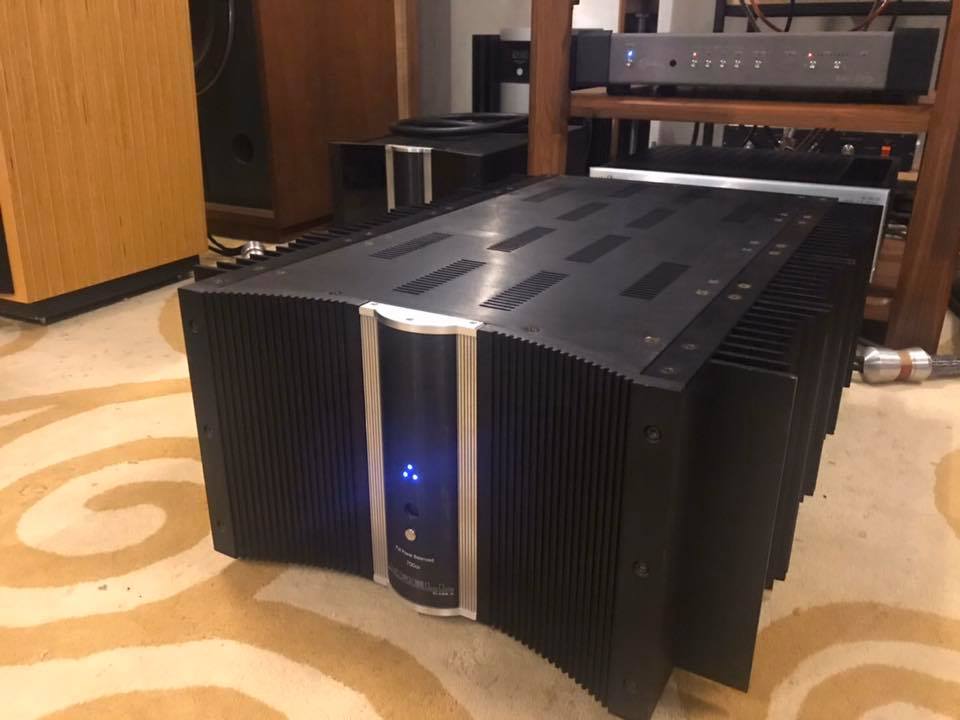
It was a puzzling realization when it occurred to me that my speakers and amp cost almost as much as the rest of my system. Since I have been a proponent of starting at the source and working back, I expect to take some abuse. Although I might argue that I wasn’t starting, I was upgrading my weakest link. I didn’t think that would work.

krell FPB-700-CX
I have owned four pieces of Krell gear over the last several years and have been happy with each of them in their time. I guess many readers tuned out after that sentence. I had two pre-amps, and I am now on my second amp. I started with the Full Power Balanced series so I can’t really address the “Krell Sound” issue of the earlier amplifiers.
 The Krell FPB 700cx is currently the top of the line stereo amp in the Class A series. They do have another series which, if you can believe it is much more expensive and supposedly, much better.
The Krell FPB 700cx is currently the top of the line stereo amp in the Class A series. They do have another series which, if you can believe it is much more expensive and supposedly, much better.
The first surprise I experienced was lifting the amp out of the shipping truck, and into my truck. It is a job for one large strong person, or two people of average size. With the shipping box the 700cx weighs in at 200 lbs. My son was less than excited at the prospect of helping me wrestle it into the basement listening room. This was not to be my last surprise.
The shipping material is very good, and Krell designed to amp to be easily removed from the carton. Okay, as easily as any 180-lb. amp can be removed. Keanen and I wrestled this monster out of the box and into position between the speakers. The power cord is semi-permanent so it is still in place. I connected the amp to the system via a 9 meter pair of Purist Venustus balanced interconnects.
Cosmetically the FPB 700cx is much different than the FPB 200. The face of the amp in no longer flat as it has been since Krell released their first product. The amp looks much nicer, and can I say, more expensive.
The entire line was redone cosmetically when the CAST series was developed. Since I do not use a KCT pre-amp, I cannot use the CAST technology, but my understanding is that it works very when to transfer the signal in the current mode.
I know that no amp is going to be anywhere near peak performance right out of the box, but who among us has ever started running pink noise, or a burn-in CD without listening first? Oh you liar! The amp had obvious potential. Soundstage was small, and lacking in inner detail and clarity, bass and treble were both thin, and rolled off, but it still sounded pretty reasonable. For the next three days I alternated between brief listening sessions and running the new Purist Burn-in CD 24 hours a day. Purist claims that the new CD works twice as fast as the older model, and based on what I heard after three days I would have to agree with their claims.
On Saturday, four days after the amp arrived several friends and a couple of acquaintances arrived for a ‘listening session.’ We are trying to organize a Northeast Wisconsin Audiophile Society, but that’s another thread! Comments began to flow almost immediately. The first was, “This wine is a little too sweet for my taste.” He was right; the wine wasn’t very good, so we moved on to another bottle. People seemed to settle down after that. We took turns listening to the music people had brought with them.
Greg has heard my system a lot of times was suitable impressed. He even commented that he heard things that he did not hear at home. Other things mentioned where the increase in soundstage size, and detail, but everyone seemed to come back to the increase in the bass level. Since I had not had much time to listen on my own yet, I did not argue with their assessments.
Over the next few days I formed my own opinions, but they did not differ much from what my friends had said, although I think they are more in- depth than what had been said during that session.
Upgrading from an FPB 200 to the 700cx doesn’t seem like it should be as dramatic as it turned out. The 700cx isn’t just bigger and heavier, it is completely different. Sure the bass goes a lot lower, and is considerably more fleshed out, but there is a lot more than just that. The midrange is so clear that sounds and images seem to float out of the speaker rather than being driven.

The Krell/Kharma’s do not have the most liquid midrange I have ever heard. That award went to a pair of Revel Studio’s being driven by Levinson electronics. I still would not trade the Revel/Levinson combo for my Krell/Kharma since the latter just does too many things right, or better than the former.
Krell has been accused of making bass heavy and overly bright sounding amps in the past. I did not hear any of that in my room. The treble was grain free and smooth, never shrill. I have yet to turn the system of because I found it fatiguing. I have to admit I have been resentful of other priorities that forced me to stop listening when I still wanted to spin just one more LP.
My biggest priorities when listening are ‘pure midrange’ and a palpable soundstage. I will give up the lowest bass registers to get better midrange, and a solid soundstage. The Krell offered me not only great bass, and smooth treble, but the midrange I demand, and soundstage with height, depth, and width, full of detail and air.
One of the first LPs I used after the amp had been running for a reasonable period, was the new Norah Jones on 180-gram vinyl. When she began singing “Sunrise” I had the idea that there was air in front of her, and behind. She was singing in a definable space rather than just floating somewhere between the speakers. I joked to Greg later on the phone that I could almost tell what color dress she was wearing.
Driving in neutral
The 700cx has less sonic signature than any piece of electronics gear I have ever owned. I hear more of the source, and less of the amp, than I did with the FPB 200. For those who have written off Krell equipment because of the claims of others, or even experience with the ‘Krell Sound’ you really need to listen to this amp. It is unlike anything I have ever heard. I have had my Sota Star Sapphire/Rega RB 900/Benz Glider, and my Sony SCD 777es for a number of years. I have always been happy with them. Since adding the Krell FPB 700cx, I can’t help but wonder what better sources might sound like in my room.
I am self-employed and anything but wealthy. I save up money to buy my stereo equipment. If I don’t have cash the purchase doesn’t happen. I did borrow money to buy my speakers though, but anyway… The Krell FPB 700cx costs $14,000. I paid $50,000 for my first house, for cryin’ out loud!!! Is the amp worth what I paid? In a word, yes. Any purchase is going to be a personal thing, and there are going to be even more people who think I’m stupid after reading this review than there were before, but this amp does so many things so well that it demands attention. That kind of quality costs money to build.
So you have one of two choices: either start saving, or start arguing!
Nate 08/17/04
Editor’s Note –
Nate’s amp turned up many years later in my listening room in Sturgeon Bay WI! – Nate sold the amp to his brother-in-law Greg, who, for some reason only he could tell you, brought it around to my place one day and left it there!
Description
Amplifier
Specifications:
- 700 Wpc into 8 Ohms
- 1400 Wpc into 4 Ohms,
- 2800 Wpc into 2 Ohms
- Frequency response: 20 Hz to 20 kHz, +0 db, -3 db
- Signal to noise ratio: 120 db
- Gain: 26.4 db
- THD: 1 kHz <0.03%
- Input impedance: 100 ohms
Power consumption:
Standby: 85 W
Idle: 430 W
Max: 6000 W
Actual Measurements on bench:
-
968W into 8 Ohms
-
1850W into 4 Ohms
-
3200W into 2 Ohms – test was abandoned as the test equipment couldnt handle more power.
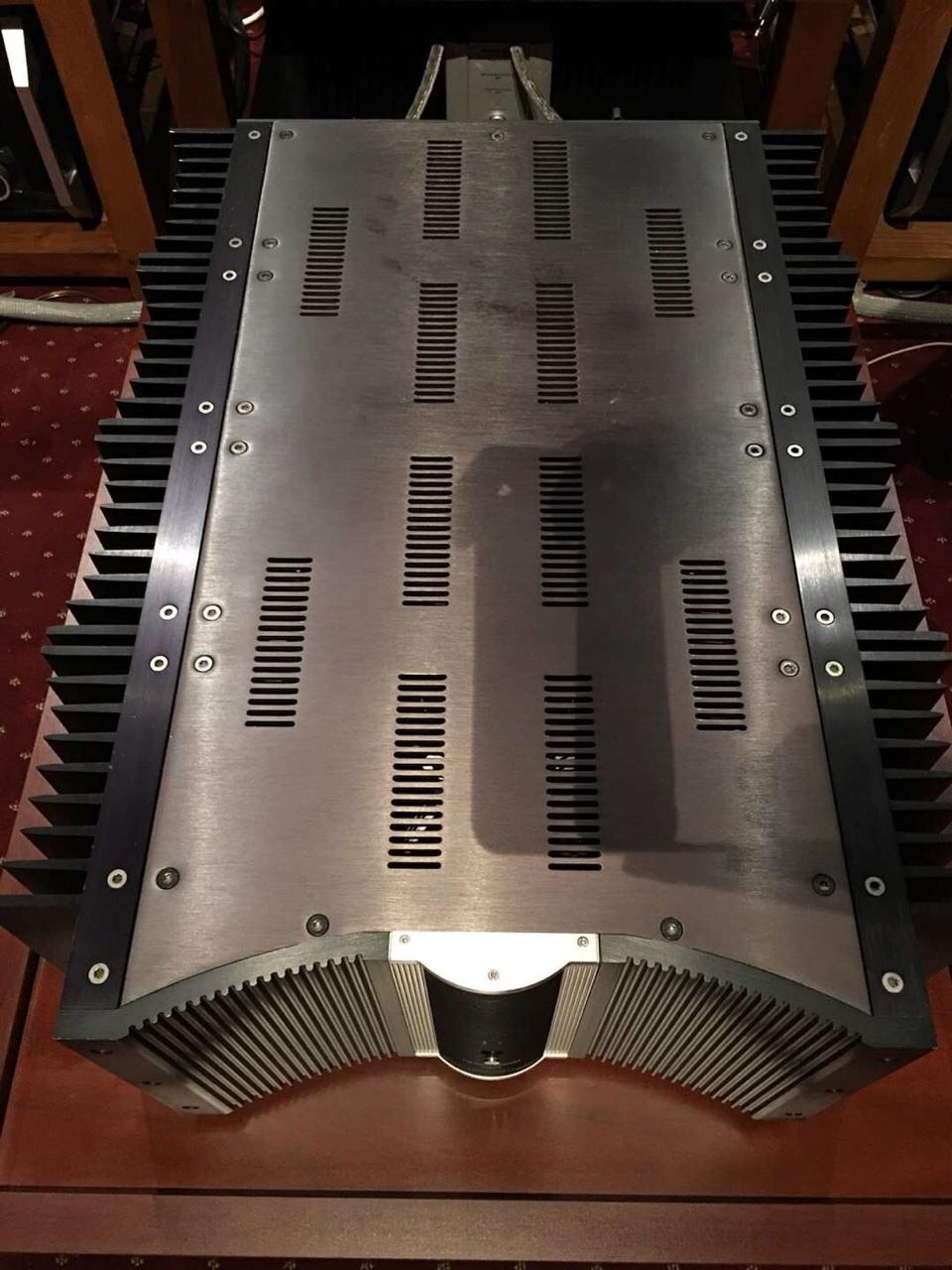

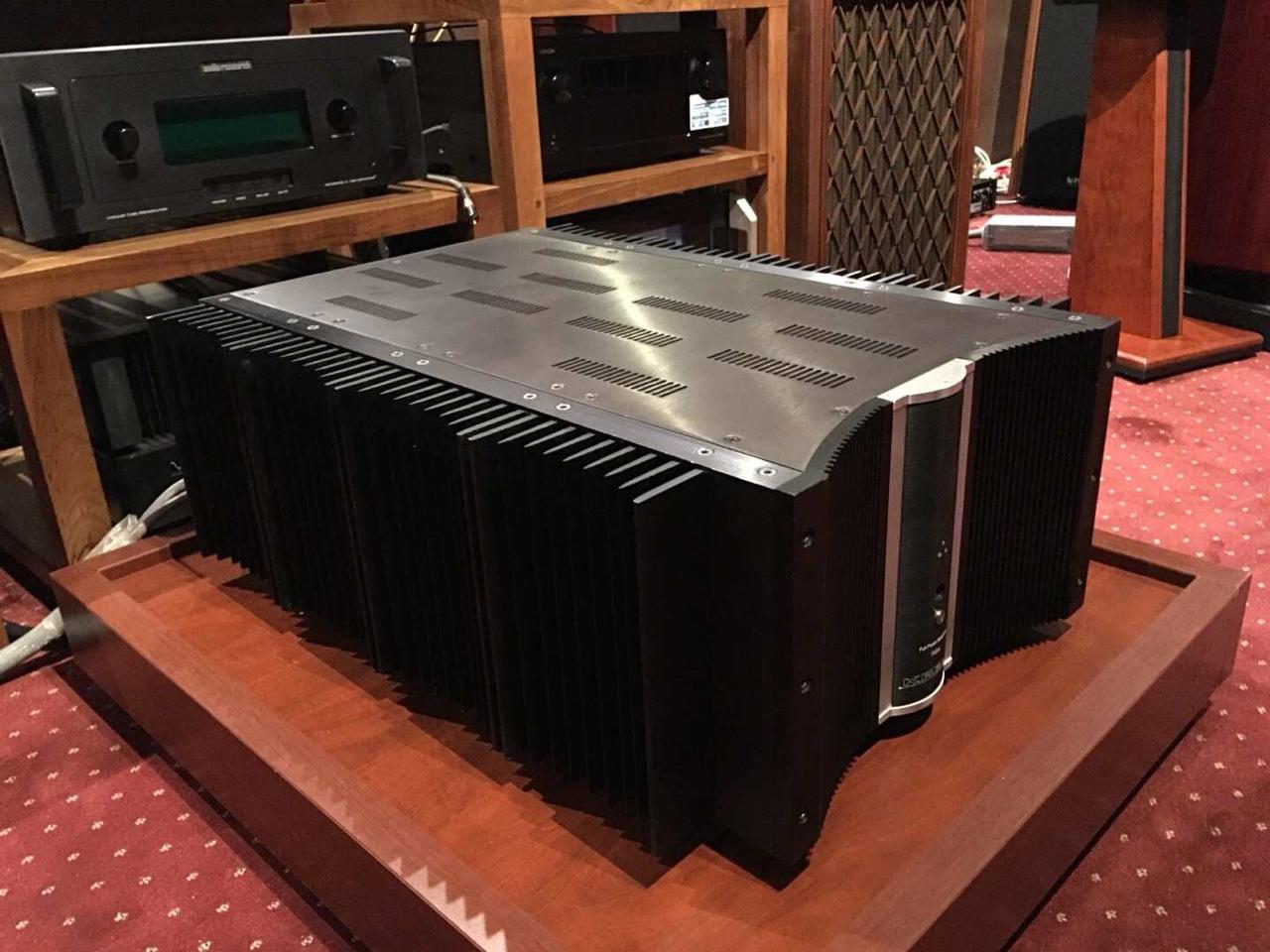
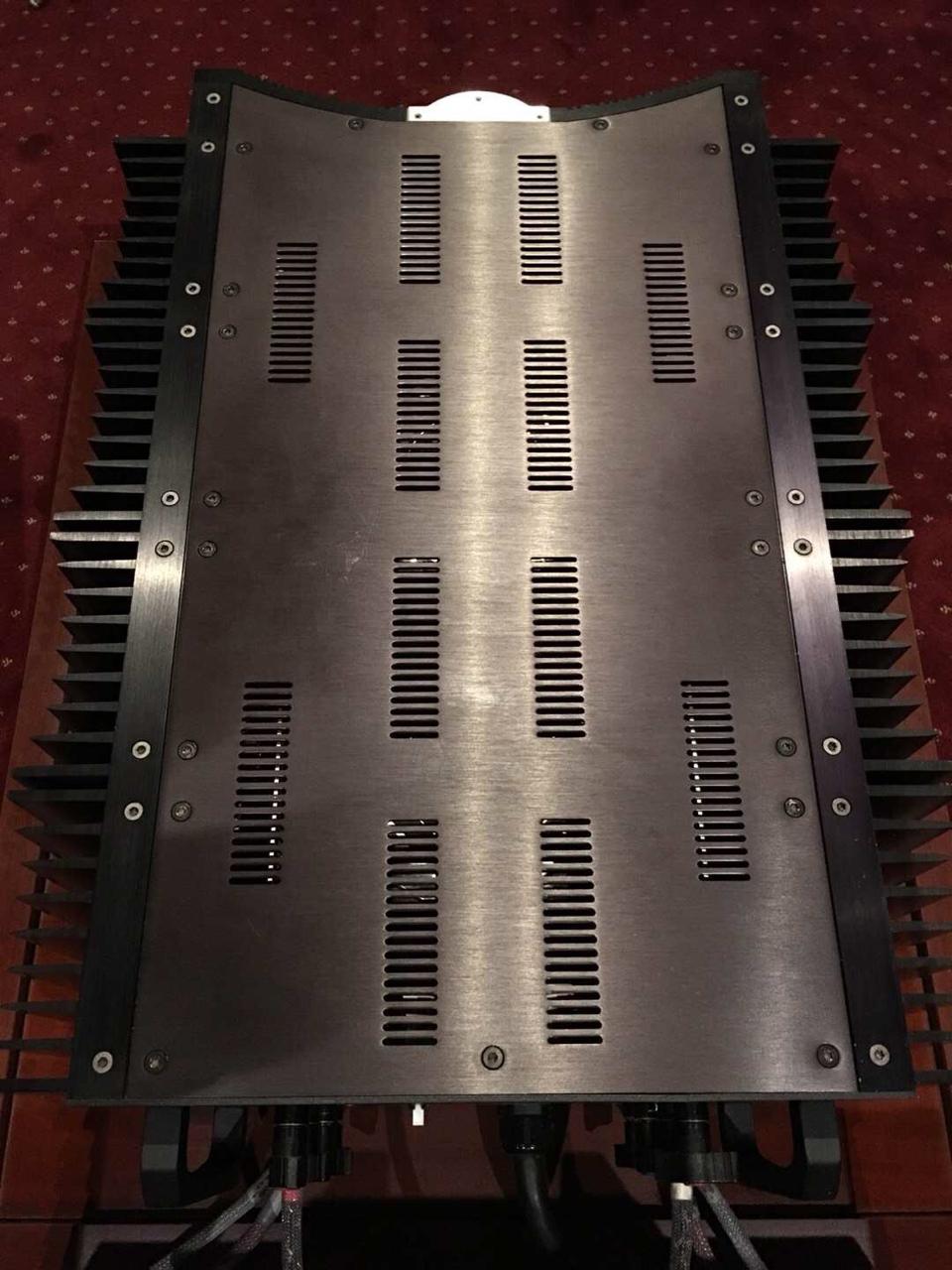
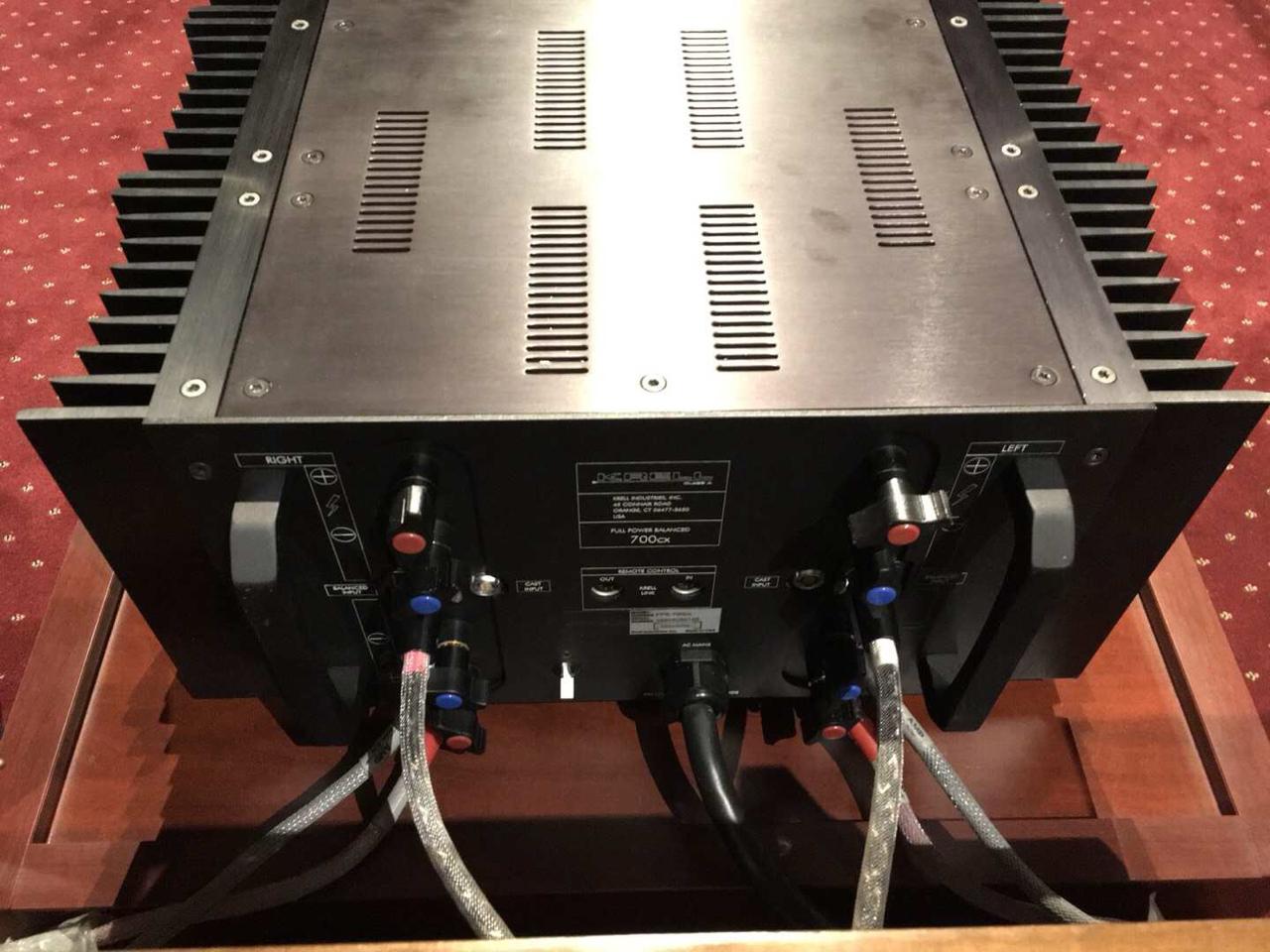
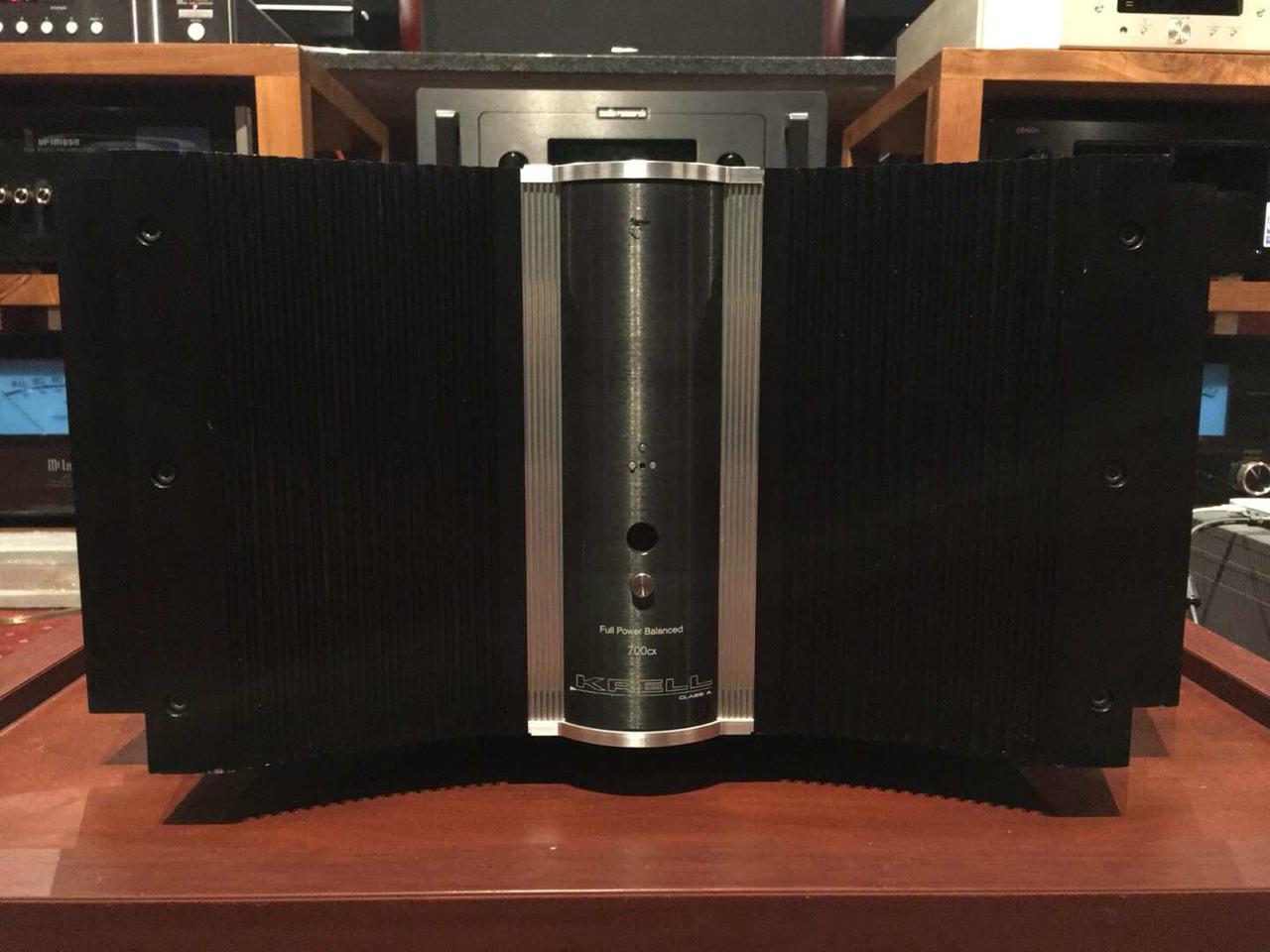
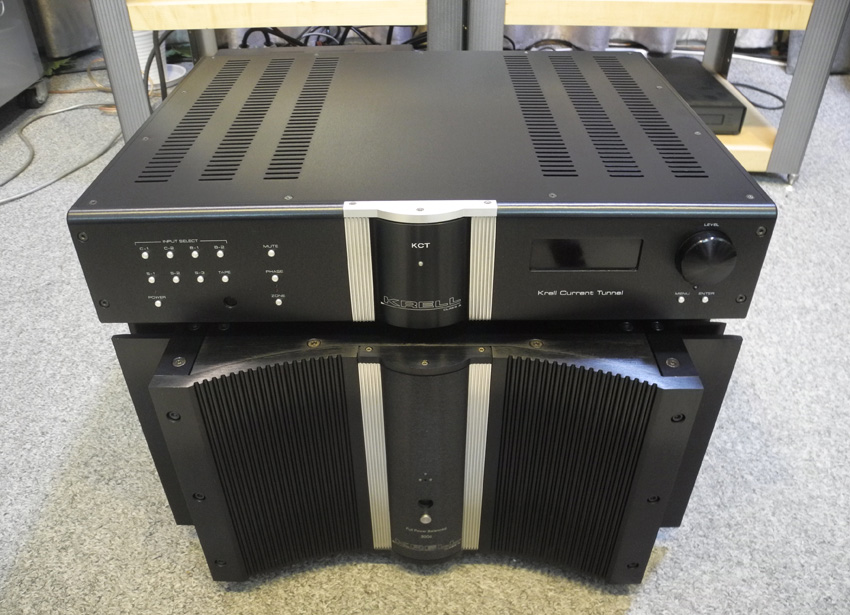
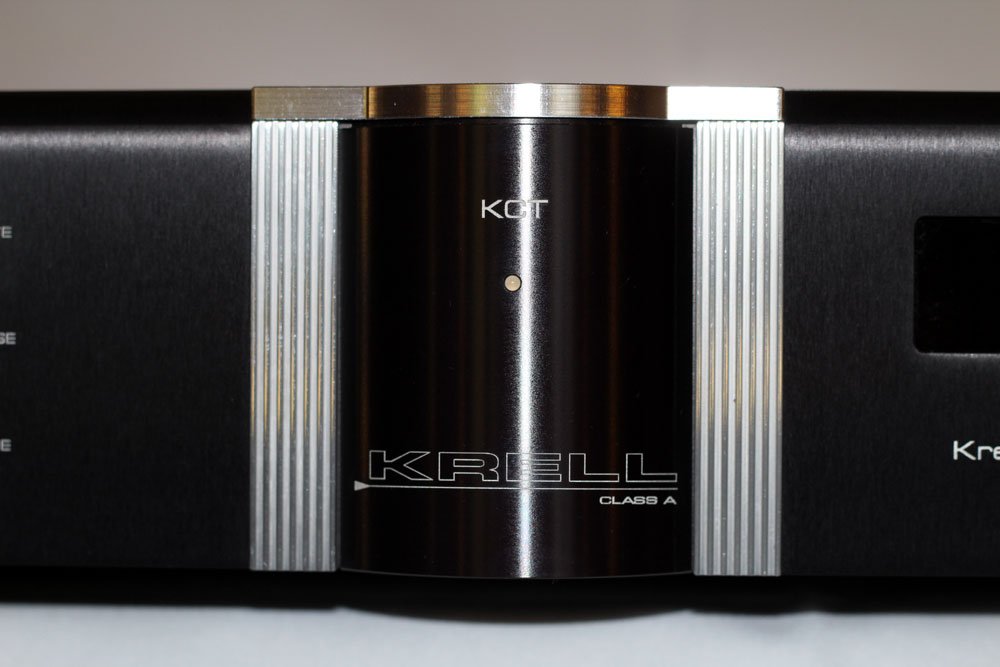
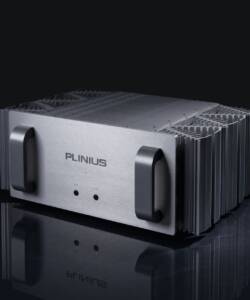
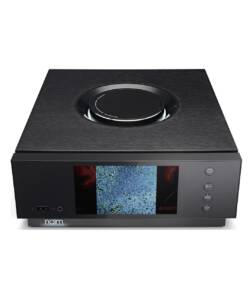
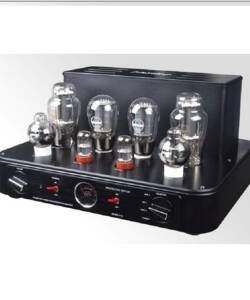
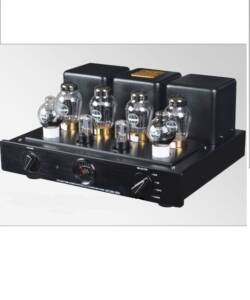
Reviews
There are no reviews yet.